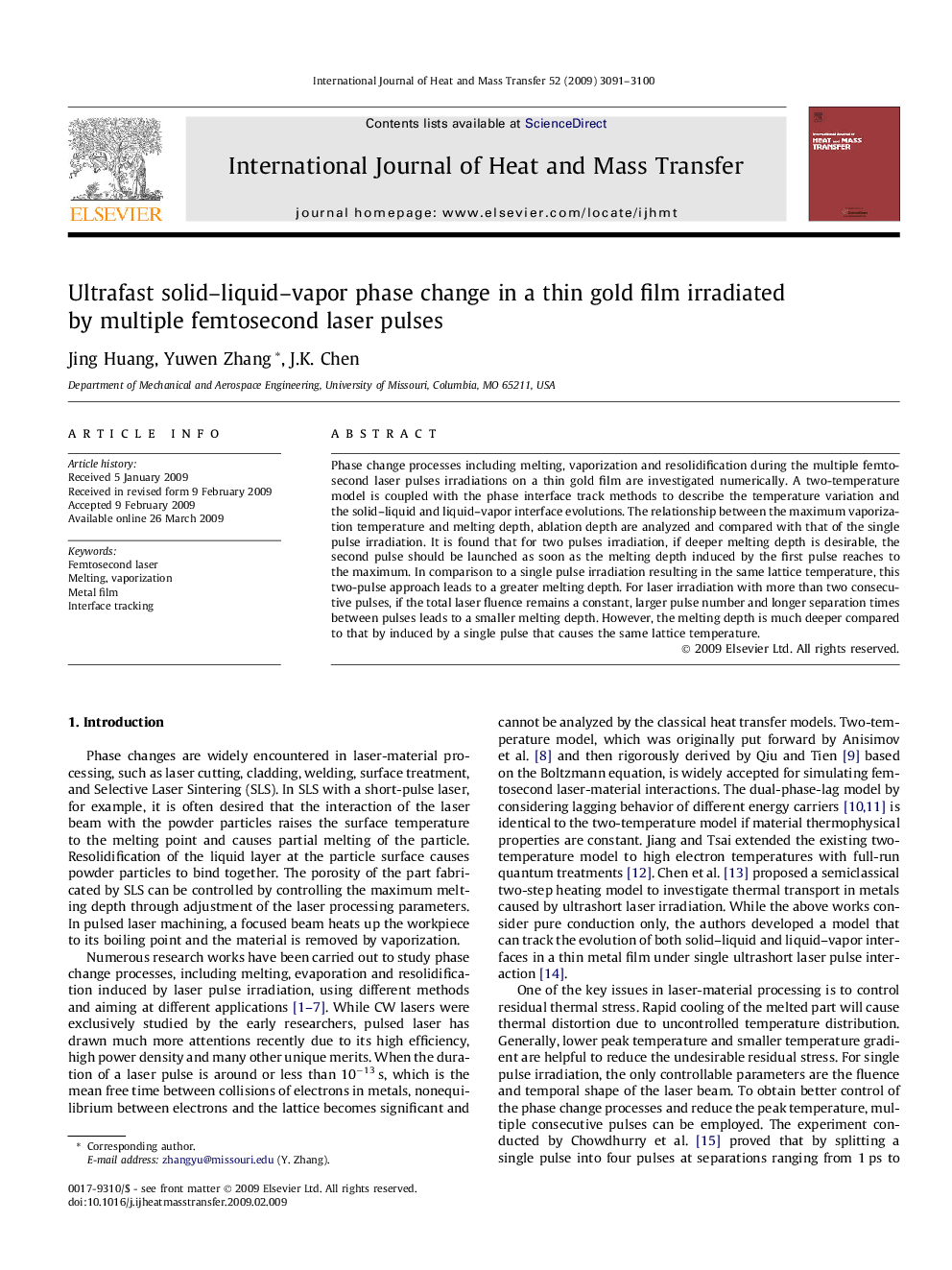| Article ID | Journal | Published Year | Pages | File Type |
|---|---|---|---|---|
| 661974 | International Journal of Heat and Mass Transfer | 2009 | 10 Pages |
Phase change processes including melting, vaporization and resolidification during the multiple femtosecond laser pulses irradiations on a thin gold film are investigated numerically. A two-temperature model is coupled with the phase interface track methods to describe the temperature variation and the solid–liquid and liquid–vapor interface evolutions. The relationship between the maximum vaporization temperature and melting depth, ablation depth are analyzed and compared with that of the single pulse irradiation. It is found that for two pulses irradiation, if deeper melting depth is desirable, the second pulse should be launched as soon as the melting depth induced by the first pulse reaches to the maximum. In comparison to a single pulse irradiation resulting in the same lattice temperature, this two-pulse approach leads to a greater melting depth. For laser irradiation with more than two consecutive pulses, if the total laser fluence remains a constant, larger pulse number and longer separation times between pulses leads to a smaller melting depth. However, the melting depth is much deeper compared to that by induced by a single pulse that causes the same lattice temperature.
